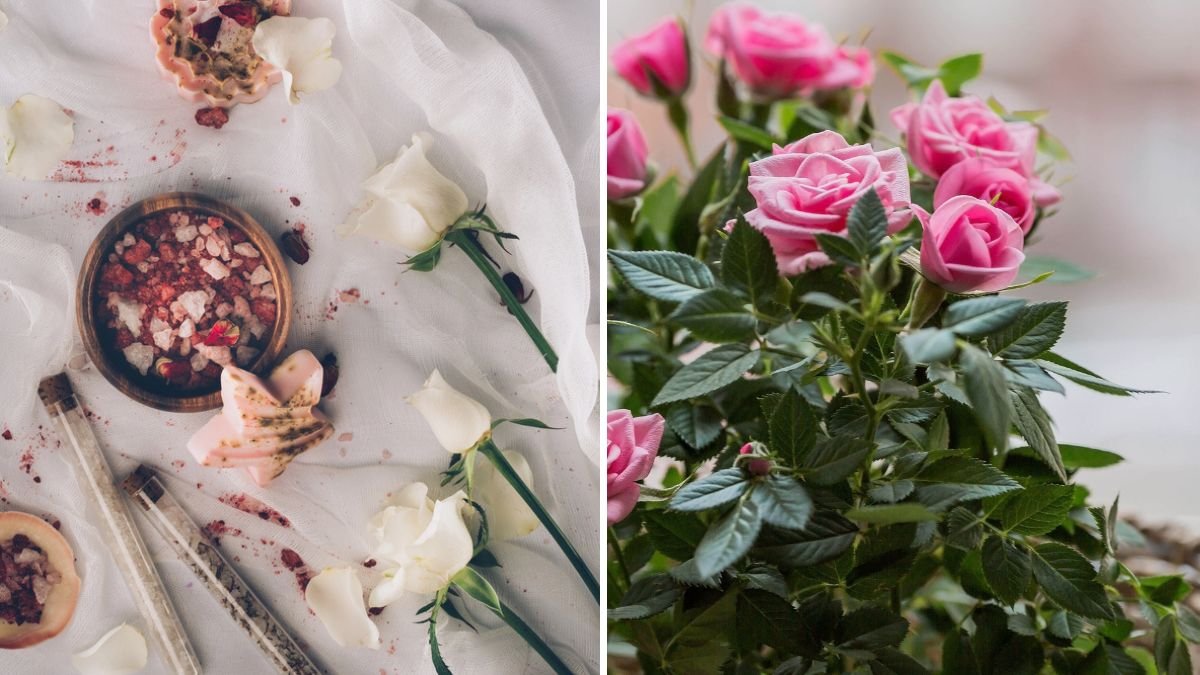Roses have long been celebrated for their beauty, fragrance, and symbolism. But beyond their ornamental value, rose petals offer a versatile range of uses around the home, from culinary creations to natural skincare and home décor. Instead of letting rose petals wilt or go to waste, savvy gardeners and home enthusiasts can turn them into practical, luxurious, and eco-friendly solutions.
This guide highlights five genius ways to use rose petals, complete with step-by-step instructions, tips, and ideas for maximizing their beauty and benefits.
1. Create Fragrant Homemade Potpourri
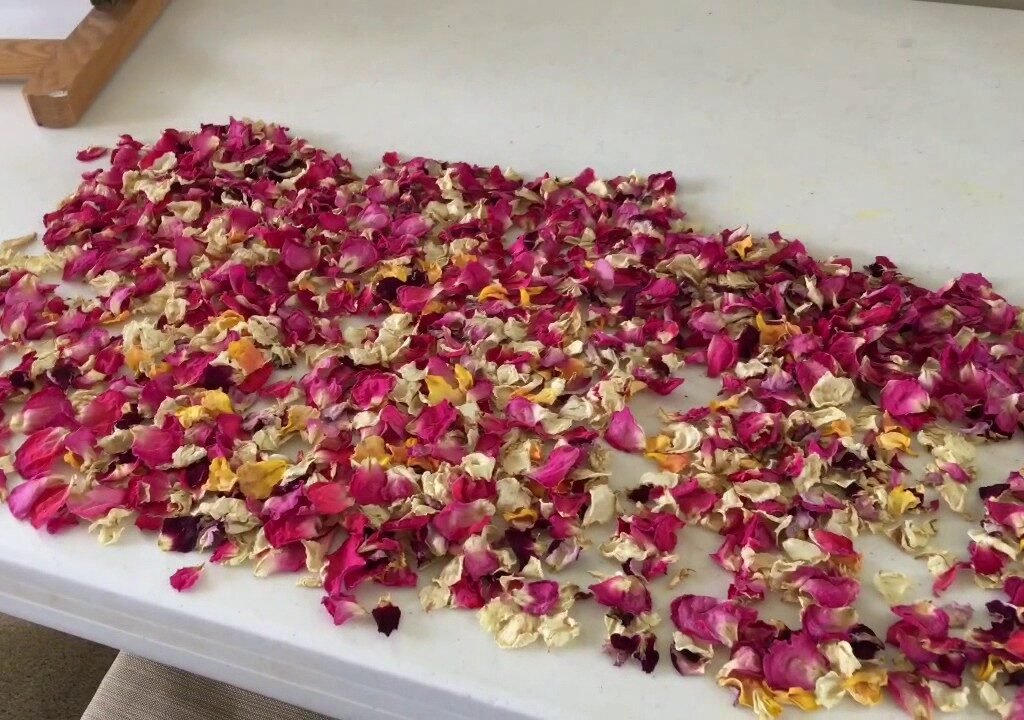
One of the simplest and most rewarding ways to use rose petals is to turn them into homemade potpourri, filling your home with a natural, lasting fragrance.
Steps for Making Rose Petal Potpourri:
- Collect Fresh Petals: Pick petals from pesticide-free roses. Use vibrant, aromatic petals for the best results.
- Dry the Petals: Spread petals on a baking sheet or mesh tray in a well-ventilated, dry area. Avoid direct sunlight, which can fade color. Dry for 3–5 days until crisp.
- Add Fragrant Additions: Mix dried petals with other botanicals like lavender, chamomile, cloves, or cinnamon sticks.
- Enhance Scent: Add a few drops of essential oils like rose, jasmine, or vanilla to intensify the aroma.
- Display: Place the mixture in decorative bowls, jars, or sachets for a long-lasting natural scent.
Benefits:
- Provides a chemical-free, natural home fragrance.
- Adds a decorative touch to bowls, vases, or shelves.
- Preserves the beauty of your garden roses for months.
Tip: Refresh the scent periodically by lightly crushing the petals or adding essential oils. Potpourri also makes a thoughtful homemade gift.
2. Infuse Oils and Vinegars
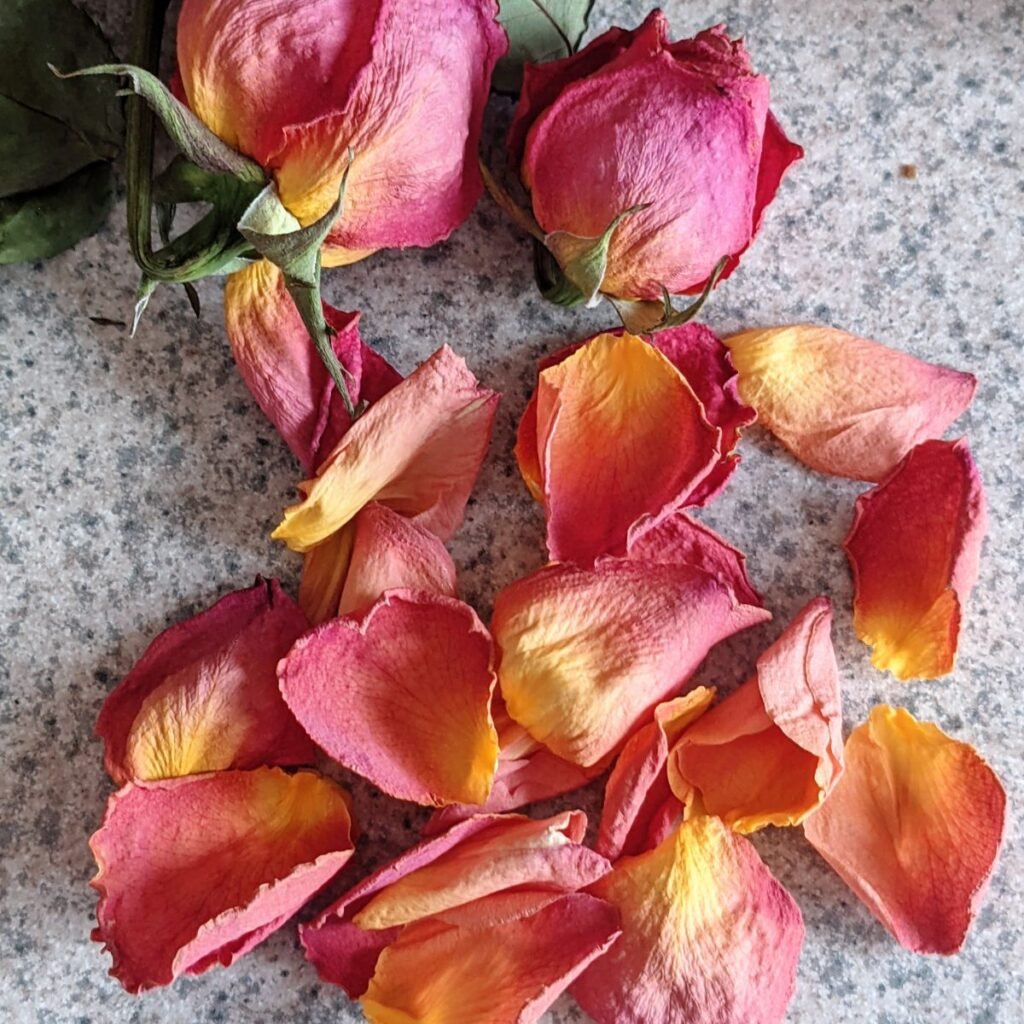
Rose petals can be used to create infused oils and vinegars, which are perfect for cooking, aromatherapy, or natural beauty remedies.
Rose-Infused Oil:
- Select Petals: Use fresh, pesticide-free petals.
- Prepare a Carrier Oil: Olive, jojoba, or almond oil works well.
- Combine and Heat: Gently heat petals with oil in a double boiler for 2–3 hours, ensuring the oil does not boil.
- Strain and Store: Remove petals using a fine mesh or cheesecloth. Store the oil in a dark glass bottle in a cool, dry place.
Rose-Infused Vinegar:
- Combine Petals and Vinegar: Fill a jar with petals and cover with white or apple cider vinegar.
- Seal and Steep: Let the mixture steep in a cool, dark place for 2–3 weeks.
- Strain: Remove petals and store vinegar in a clean bottle.
Uses:
- Rose oil can be used for massage, skincare, or adding flavor to baked goods.
- Rose-infused vinegar makes a fragrant salad dressing, natural cleaner, or hair rinse.
Benefits:
- DIY infused products are chemical-free and environmentally friendly.
- Offers a natural way to incorporate rose aroma into daily routines.
- Preserves the essence of seasonal blooms for months.
Tip: Label jars with the date of infusion to track freshness. Infused oils can last up to six months; vinegar can last up to a year.
3. Make Rose Petal Bath and Skincare Products
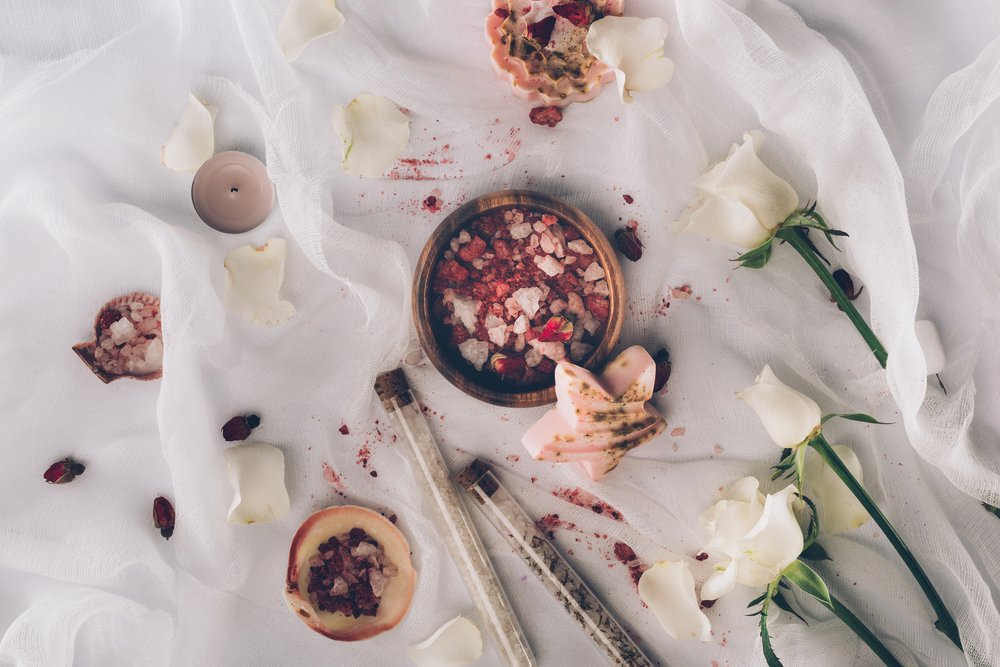
Rose petals have natural antioxidants, anti-inflammatory properties, and a gentle fragrance, making them ideal for homemade bath and skincare treatments.
Rose Petal Bath Soak:
- Dry Petals: Spread petals out in a cool, ventilated area until crisp.
- Mix Ingredients: Combine dried petals with Epsom salts, sea salt, or baking soda. Optional: Add a few drops of essential oils.
- Store: Keep the mixture in an airtight jar.
- Use: Add 1–2 tablespoons to warm bath water for a fragrant, soothing soak.
Rose Petal Face Toner:
- Boil Petals in Water: Use 1 cup of water and ½ cup of fresh petals; simmer for 10 minutes.
- Cool and Strain: Pour into a clean bottle once cooled.
- Apply: Use a cotton pad to apply to the face as a gentle, natural toner.
Benefits:
- Rose petals hydrate and soothe skin, reducing redness and irritation.
- Provides a luxurious spa-like experience at home.
- Avoids harsh chemicals found in commercial skincare products.
Tip: Always use pesticide-free petals for skincare to avoid irritation.
4. Culinary Uses for Rose Petals
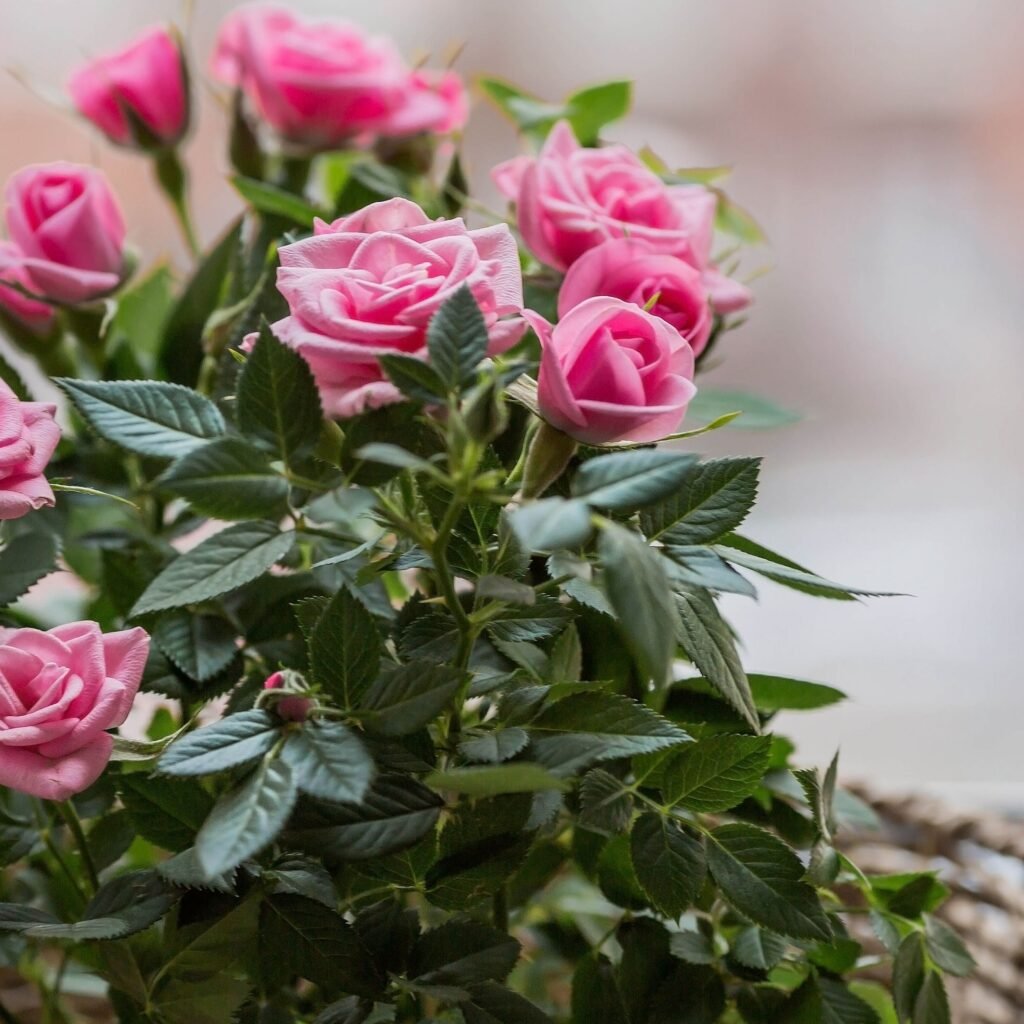
Edible rose petals are not only beautiful but also add flavor, color, and aroma to a variety of dishes.
Ways to Use Rose Petals in Cooking:
- Salads: Toss fresh petals into green salads for a floral touch.
- Teas and Infusions: Steep petals in hot water for a fragrant, caffeine-free tea.
- Desserts: Add petals to cakes, custards, or jelly.
- Sugar or Honey Infusions: Layer petals with sugar to create rose sugar or infuse honey with petals for flavoring.
Benefits:
- Enhances the aesthetic appeal of dishes with natural color.
- Provides mild floral flavor and a touch of elegance to meals.
- Incorporates garden harvest into edible creations sustainably.
Tip: Only use petals from roses labeled as edible or organically grown to avoid pesticides. Remove the white base of petals, which can be bitter.
5. Decorative and Creative Home Projects
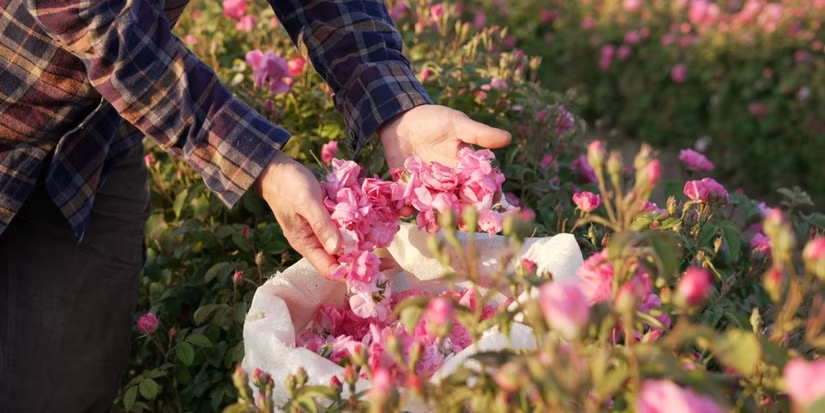
Rose petals are versatile for home décor, crafts, and creative projects, offering a sustainable way to add natural beauty indoors.
Creative Uses:
- Table Centerpieces: Scatter petals around candles or vases for festive arrangements.
- DIY Candles and Soaps: Embed dried petals in homemade candles or soaps for an elegant touch.
- Confetti for Celebrations: Use dried petals as eco-friendly confetti for weddings or parties.
- Pressed Petals: Press petals in books for framed art, bookmarks, or greeting cards.
Benefits:
- Adds a touch of luxury and natural beauty to home décor.
- Encourages creative expression and sustainable craft projects.
- Provides a sensory experience through touch, sight, and fragrance.
Tip: Combine rose petals with other dried flowers like lavender, marigold, or chamomile for colorful, multi-sensory projects.
Additional Tips for Using Rose Petals Around the Home
- Harvest Strategically: Pick petals in the morning after dew has evaporated for maximum fragrance and color.
- Use Pesticide-Free Roses: Always choose chemical-free roses for culinary and skincare uses.
- Store Properly: Keep dried petals in airtight containers in a cool, dark place to preserve color and fragrance.
- Experiment Safely: Test small batches when using petals in food or skincare to ensure no allergic reactions.
- Combine with Essential Oils: Enhances scent and therapeutic properties for baths, soaps, and potpourri.
Benefits of Using Rose Petals Creatively
- Sustainable Use of Garden Produce: Prevents waste and extends the life of your blooms.
- Health and Wellbeing: Rose petals provide mild antioxidants, anti-inflammatory benefits, and relaxation through aromatherapy.
- Aesthetic Appeal: Adds color, texture, and fragrance to home décor and personal projects.
- Cost-Effective: Homemade rose products save money compared to commercial alternatives.
- Personalized Gifts: DIY rose creations make thoughtful, eco-friendly gifts for friends and family.
By integrating rose petals into daily life, homeowners can maximize the value and enjoyment of their garden, turning ordinary blooms into functional, beautiful, and fragrant treasures.
Conclusion
Rose petals are far more than just decorative blooms—they are versatile, fragrant, and valuable resources that can transform your home. From fragrant potpourri and infused oils to luxurious bath products, edible delights, and creative décor, rose petals offer a range of practical and beautiful applications.
By following these five genius ways to use rose petals, gardeners can extend the life and benefits of their roses, turning every blossom into an opportunity for creativity, health, and home beauty. Whether enhancing your culinary creations, crafting unique home décor, or indulging in a relaxing rose-infused bath, the possibilities are endless.
Roses are not only a feast for the eyes—they can also nourish the body, uplift the spirit, and beautify your surroundings. By exploring these applications, you make the most of every petal, celebrating both the elegance and functionality of one of nature’s most beloved flowers.
